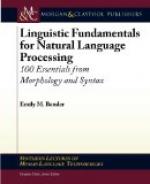The only difficulty in the explanation of this word, originates in the fact, that it was formerly applied to the plural as well as singular number. It is now applied to the singular only when referring directly to an object; as, that man. And it never should be used otherwise. But we often see phrases like this; “These are the men that rebeled.” It should be, “these are the men who rebeled.” This difficulty can not be overcome in existing grammars on any other ground. In modern writings, such instances are rare. This and that are applied to the singular; these and those to the plural.
* * * * *
=What= is a compound of two original words, and often retains the meaning of both, when employed as a compound relative, “having in itself both the antecedent and the relative,” as our authors tell us. But when it is dissected, it will readily enough be understood to be an adjective, defining things under particular relations.
But I shall weary your patience, I fear, if I stay longer in this place to examine the etymology of small words. I intended to have shown the meaning and use of many words included in the list of conjunctions, which are truly adjectives, such as both, as, so, neither, and, etc.; but I let them pass for the present, to be resumed under the head of contractions.
From the view we have given of this class of words, we are saved the tediousness of studying the grammatical distinctions made in the books, where no real distinctions exist. In character these words are like adjectives; their meaning, like the meaning of all other words, is peculiar to themselves. Let that be known, and there will be little difficulty in classing them. We need not confuse the learner with “adjective pronouns, possessive adjective pronouns, distributive adjective pronouns, demonstrative adjective pronouns, indefinite adjective pronouns,” nor any other adjective pronouns, which can never be understood nor explained. Children will be slow to apprehend the propriety of a union of adjectives and pronouns, when told that the former is always used with a noun, and never for one; and the latter always for a noun, but never with one; and yet, that there is such a strange combination as a “distributive or indefinite adjective pronoun,”—“confusion worse confounded.”
In the french language, the gender of adjectives is varied so as to agree with the nouns to which they belong. “Possessive pronouns,” as they are called, come under the same rule, which proves them to be in character, and formation, adjectives; else the person using them must change gender. The father says, ma (feminine) fille, my daughter; and the mother, mon (masculine) fils, my son; the same as they would say, bon pere, good father; bonne mere, good mother;




